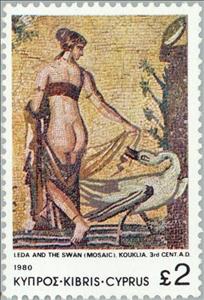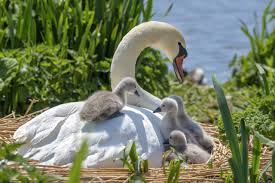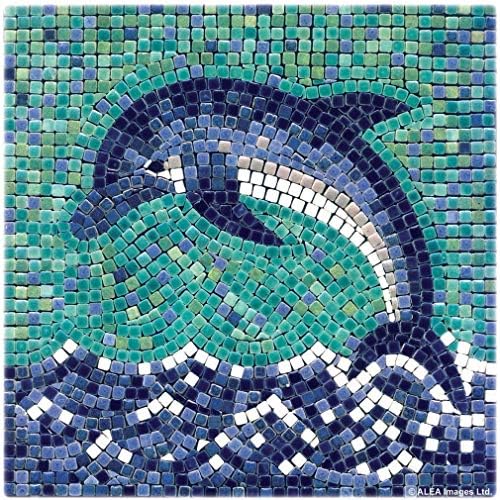Stamp: Leda and the swan, Mosaic, Kouklia, 3rd cent. A.D. (Cyprus 1980)
Leda and the swan, Mosaic, Kouklia, 3rd cent. A.D. (Cyprus 1980)
15 September (Cyprus ) within release Archaelological Treasures goes into circulation Stamp Leda and the swan, Mosaic, Kouklia, 3rd cent. A.D. face value 2 Cypriot pound
| Stamp Leda and the swan, Mosaic, Kouklia, 3rd cent. A.D. in catalogues | |
|---|---|
| Michel: | Mi:CY 538 |
Stamp is vertical format.
Also in the issue Archaelological Treasures:
- Stamp - Gold Necklace, Arsos, 7th cent. B.C. face value 10;
- Stamp - Bronze Cow, Vouni Palace, 5th cent. B.C. face value 15;
- Stamp - Amphora, Salamis, 6th cent. B.C. face value 25;
- Stamp - Gold finger-ring, Engomi, 13th cent. B.C. face value 40;
- Stamp - Bronze Cauldron, Salamis, 8th cent. B.C. face value 50;
- Stamp - Funerary Stele, Marion, 5th cent. B.C. face value 75;
- Stamp - Jug, 15th-14th cent. B.C. face value 100;
- Stamp - Terracotta Warrior, 6th-5th cent. B.C. face value 125;
- Stamp - Bronze relief, Lions attacking Bull, Vouni Palace, 5th cent. face value 150;
- Stamp - Faience Rhyton, Kition, 13th cent. B.C. face value 175;
- Stamp - Bronze statue of Ingot God, Engomi, 12th cent. B.C. face value 200;
- Stamp - Stone Bowl, Khirokitia, 6th Mil. B.C. face value 500;
- Stamp - Ivory Plaque, Salamis, 7th cent. B.C. face value 1;
- Stamp - Leda and the swan, Mosaic, Kouklia, 3rd cent. A.D. face value 2;
Stamp Leda and the swan, Mosaic, Kouklia, 3rd cent. A.D. it reflects the thematic directions:
Birds (Aves), a subgroup of Reptiles, are the last living examples of Dinosaurs. They are a group of endothermic vertebrates, characterised by feathers, toothless beaked jaws, the laying of hard-shelled eggs, a high metabolic rate, a four-chambered heart, and a strong yet lightweight skeleton. Birds live worldwide and range in size from the 5 cm (2 in) bee hummingbird to the 2.75 m (9 ft) ostrich. They rank as the class of tetrapods with the most living species, at approximately ten thousand, with more than half of these being passerines, sometimes known as perching birds. Birds are the closest living relatives of crocodilians.
Swans are birds of the genus Cygnus within the family Anatidae. The swans' closest relatives include the geese and ducks. Swans are grouped with the closely related geese in the subfamily Anserinae where they form the tribe Cygnini. Sometimes, they are considered a distinct subfamily, Cygninae.
Archaeology or archeology[a] is the study of human activity through the recovery and analysis of material culture. The archaeological record consists of artifacts, architecture, biofacts or ecofacts, sites, and cultural landscapes. Archaeology can be considered both a social science and a branch of the humanities. It is usually considered an independent academic discipline, but may also be classified as part of anthropology (in North America – the four-field approach), history or geography
A mosaic is a pattern or image made of small regular or irregular pieces of colored stone, glass or ceramic, held in place by plaster/mortar, and covering a surface. Mosaics are often used as floor and wall decoration, and were particularly popular in the Ancient Roman world.
Animals are multicellular, eukaryotic organisms of the kingdom Animalia (also called Metazoa). All animals are motile, meaning they can move spontaneously and independently, at some point in their lives. Their body plan eventually becomes fixed as they develop, although some undergo a process of metamorphosis later on in their lives. All animals are heterotrophs: they must ingest other organisms or their products for sustenance.





